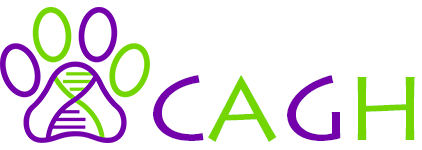Authors Amy Ross (1), Esther Palomino Lago (1), Debbie Guest (1)
Affiliations 1. CSS, Royal Veterinary College, London, UK
Presentation Type Talk
Abstract
Fractures in Thoroughbred racehorses can be caused by bone overloading, contrasting with fractures that are sustained due to trauma. Bone over loading fractures often occur on the racecourse and are the leading reason for euthanasia. Previous research isolated equine fibroblasts and used a polygenic scoring system to assign a risk category.
This system identified three horses each at the highest and lowest risk, which were used to generate induced pluripotent stem cells (iPSCs). These were differentiated into osteoblasts using established methods (Baird et al 2018) and used in global RNA sequencing, which identified 112 differentially expressed genes (DEGs). Analysis identified three main subgroups; 37 genes linked to bone function or formation processes, 27 unannotated genes and 48 genes that had no known links to bone function or formation pathways or processes.
The aim of this work is to determine if some of these 48 genes have novel roles in bone function or formation. To do this the SAOS2 cell line is being used due to its osteoblastic-like phenotype. 16 genes were initially investigated based on their expression in other musculoskeletal tissues and if indicated in biological pathways involved in bone/fracture.
Seven genes were not expressed at detectable levels in SAOS2 cells in either basal or osteogenic culture conditions. Five genes (including KIZ) exhibited increases in expression following osteogenic culture. Four genes decreased after osteogenic culture, one of which was LGALS1.
Endogenous LGALS1 is expressed at high levels in SAOS2 cells, and its stable overexpression resulted in very few changes in the expression of osteoblast and osteocyte associated genes or alkaline phosphatase (ALP) activity under both basal and osteogenic culture conditions. However, alizarin red staining to detect matrix mineralisation showed that fewer and smaller nodules were produced following LGALS1 knockdown after 21 days of osteogenic culture.
The stable knockdown of LGALS1 in SAOS2 cells cultured under basal conditions resulted in a significant decrease in cell proliferation. Osteoblast and osteocyte associated genes showed a general trend to increase in knockdown basal cells. Matrix mineralisation (detected with alizarin red and hydroxyapatite) showed no mineralisation in basal conditions.
Following osteogenic culture, osteoblast genes showed decreased gene expression. whereas osteocyte-associated genes showed fewer changes. LGALS1 knockdown also increased ALP activity after 7 days of osteogenic culture. After 21 days, matrix mineralisation (detected with alizarin red and hydroxyapatite) showed larger numbers of nodules but of a smaller size in knockdown cells.
In summary, LGALS1 modulation has been demonstrated to affect gene expression, cell proliferation and osteogenic differentiation. This could suggest a negative association between lower LGALS1 expression in osteoblasts derived from high-risk horses and fracture risk.
Modulation of KIZ levels is ongoing, but overexpression of the gene under basal conditions has demonstrated changes in both osteoblast and osteocyte associated genes, suggesting it may have a novel role in bone cells.
This study demonstrates the application of a genome-wide polygenic risk score to establish an in vitro cell system to identify novel genes involved in fracture risk in horses.
